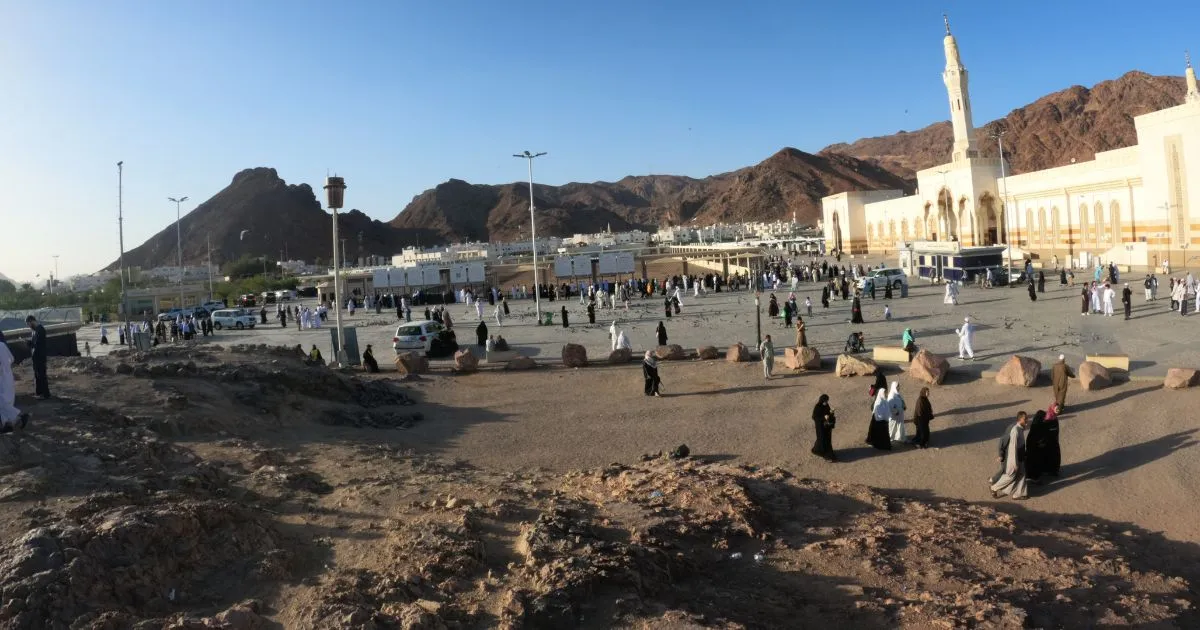Exploring Jebel Uhud: A Journey Through History and Nature
Table of Contents
Exploring Jebel Uhud: A Journey Through History and Nature
Jebel Uhud, one of the most iconic landmarks in Madinah, holds immense historical and spiritual significance for Muslims. This mountain range witnessed the pivotal Battle of Uhud, where the Prophet Muhammad (peace be upon him) and his companions faced the Quraysh in 3 AH (625 CE). Beyond its role in Islamic history, Jebel Uhud offers breathtaking views and hiking opportunities for visitors.
The Battle of Uhud and Shiab Al-Jirar (شعب الجرار)
During the Battle of Uhud, the Prophet (peace be upon him) strategically positioned Muslim archers on a hill to protect the army’s flank. However, when some archers abandoned their posts, the tide of the battle turned, leading to a temporary retreat. The Prophet and his companions withdrew to Shiab Al-Jirar, a valley within Jebel Uhud, where they regrouped.
Nearby, the Prophet (peace be upon him) prayed in Masjid Asfh, a small mosque that still stands today as a reminder of this critical moment in Islamic history.
The Prophet’s Only Direct Killing in Battle
One of the most notable incidents at Uhud was when the Prophet (peace be upon him) killed Ubay ibn Khalaf al-Jumahi, the only man he ever killed in combat. Ubay had boasted that he would kill the Prophet, but during the battle, the Prophet struck him with a spear, leading to his eventual death.
Qubbat Harun and the Ottoman Legacy
At the peak of Jebel Uhud (1,077 meters above sea level) lies Qubbat Harun, a small dome named after Harun, an Ottoman soldier tasked with surveillance during the Ottoman rule over Madinah. The Ottomans used this vantage point to monitor the surrounding areas, ensuring the city’s security.
The Story of Maharis Uhud and the Prophet’s Wounds
During the battle, the Prophet (peace be upon him) was injured, and Mharis Uhud, a well near the mountain, became significant. It is said that Ali (رضي الله عنه) brought water from this well for the Prophet, but he did not drink from it due to its bitterness. Instead, he used it to wash his face and wounds, demonstrating his resilience and faith.
Hiking Jebel Uhud: A Spiritual and Adventurous Experience
Jebel Uhud is not a single mountain but a 7-kilometer-long and 3-kilometer-wide mountain range, offering various trails for explorers.
How to Reach the Peak
- By Car: A road leads close to the base, but the final ascent requires hiking.
- The Hike: After the road ends, you’ll find a cave marking the starting point of the trail. From there, the whole hike to the summit from the foot of the mountain takes 2 to 2.5 hours.
- Preparation: Wear proper hiking shoes, carry water, and cover your head to protect against the sun.
The Mountains of Madinah: Guardians of the City
The mountains surrounding Madinah, including Jebel Uhud, Jebel Ayr, and Jebel Thawr, have historically acted as natural barriers, protecting the city from invasions. Their strategic importance is deeply tied to the region’s defense and Islamic history.

